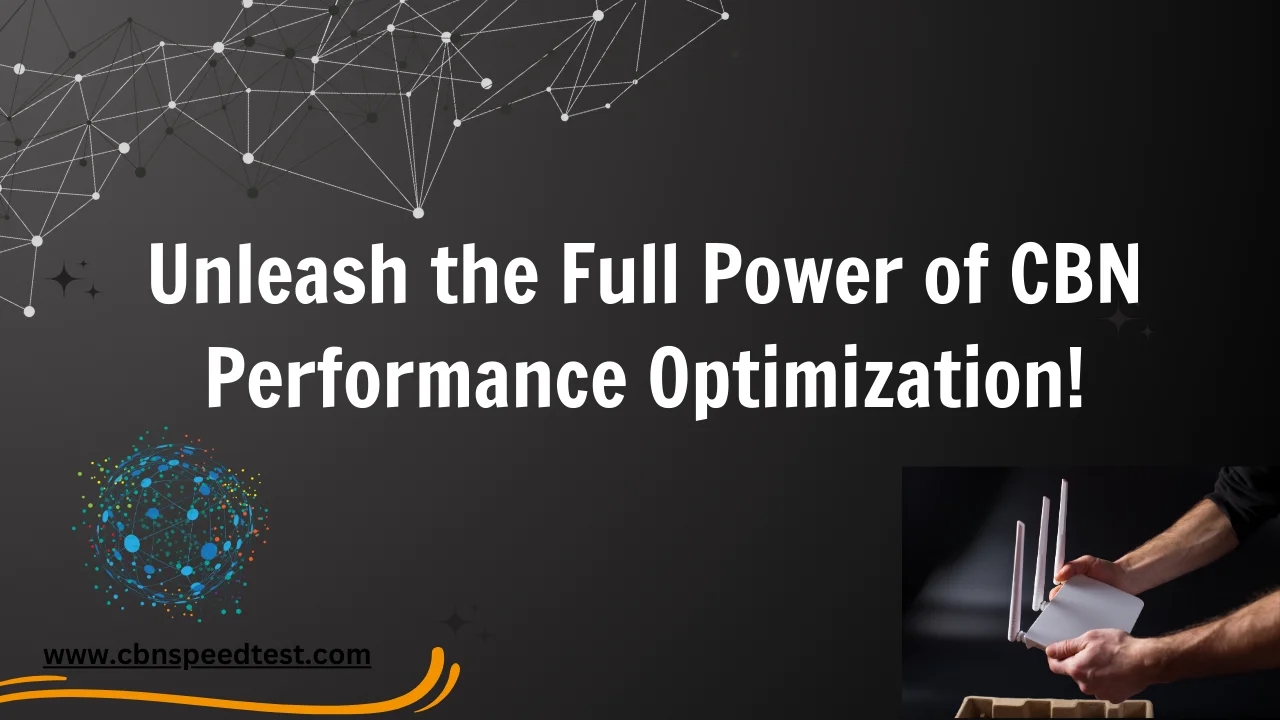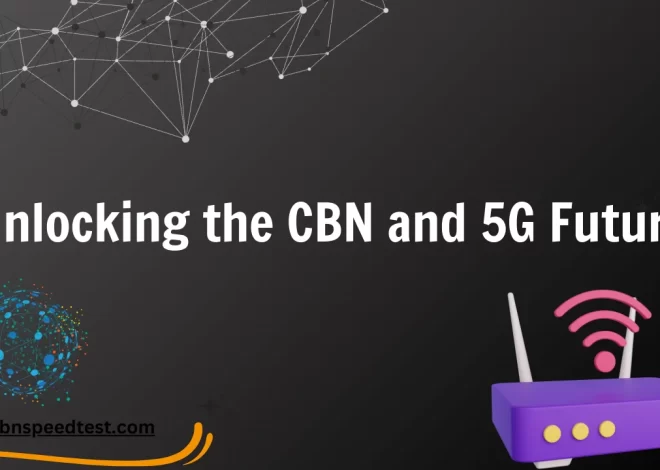
Unleash the Full Power of CBN Performance Optimization!
Introduction:
Hello, friends of the digital realm! These days, you can’t even step foot in a modern household without bumping into a Wi-Fi router or some other type of internet-connected device. The internet has become as essential as electricity, and Community Broadband Networks (CBN) have become the cornerstone for many communities in ensuring that everyone stays connected. But like any system, a CBN’s performance can be the difference between smooth streaming and frustrating lag. Ready to roll up your sleeves and optimize? Let’s dive right in.
What Constitutes CBN Performance?
Bandwidth and Throughput:
You might often hear these two terms thrown around interchangeably, but they’re distinct. Bandwidth is the maximum rate at which data can be transferred over a network. It’s the highway with designated lanes, allowing cars (data packets) to move. Throughput, however, is the actual data rate that you experience, accounting for real-world variables like network congestion and protocol overhead. Essentially, throughput tells you how many of those lanes are being effectively used at any given time.
Latency and Ping:
When it comes to real-time applications like video conferencing or gaming, latency and ping become the decisive factors. Latency is the delay incurred in the transmission of data packets over the network. Measured in milliseconds (ms), lower latency indicates quicker data transfer. Ping, on the other hand, measures how long it takes for a data packet to travel from your device to a remote server and back. Both need to be minimized for an optimal user experience.
Reliability and Uptime:
The ultimate litmus test for any network is its reliability. How often does it fail? How quickly does it recover? A reliable network ensures consistent user experience without intermittent dropouts. Uptime, closely related to reliability, measures the total operational time of a network. Networks boasting higher uptime percentages are generally considered more dependable.
Factors Affecting CBN Performance:
Infrastructure and Technology:
The backbone of any CBN is its infrastructure. Are you still tethered to age-old copper cables? You’re missing out. The world has moved on to fiber-optic technology, which offers higher speeds, longer transmission distances, and resistance to electromagnetic interference. Upgrading your infrastructure can result in quantum leaps in network performance.
Network Traffic:
Traffic is to a network what water is to a pipe. Too much, and you risk congestion; too little, and you’re underutilizing your infrastructure. High traffic during peak hours can bog down network performance. Effective traffic management ensures that critical services get priority, keeping the network robust and resilient.
Geographic Proximity:
Believe it or not, geography still plays a role in our hyper-connected world. Being physically closer to the network’s main servers or nodes can significantly reduce latency. For those on the fringes of a CBN, geographic-induced latency is an inescapable reality that can affect performance.
Software and Applications:
While hardware forms the physical layer, software acts as the orchestration layer, managing how data flows across the network. Bulky, outdated software can often act as a roadblock, constraining the free flow of data. Regular software updates and streamlined applications can materially improve performance.
Strategies for Optimization:
Infrastructure Upgrade:
-
Investing in Quality Hardware
High-quality hardware serves as the linchpin for superior network performance. Routers and switches that are engineered to handle high volumes of data are an indispensable investment. This isn’t the place for skimping and saving. Quality hardware can withstand the rigors of heavy network traffic and can adapt to future upgrades.
-
Importance of Fiber-Optic Connections
If you’re still on the fence about switching to fiber-optic technology, let this be your final nudge. A fiber-optic connection is a force multiplier in network performance, offering high-speed data transmission over long distances with minimal loss. The capacity for future scalability makes it a wise investment for any CBN.
Software Enhancements:
-
Efficient Network Monitoring:
Real-time monitoring of network performance can be a game-changer. Advanced software tools provide actionable insights into network health, flagging anomalies and bottlenecks before they escalate into full-blown issues. Periodic audits using these tools can guide optimization strategies.
-
Security Measures:
Data breaches or unauthorized access can not only compromise sensitive data but also hamstring network performance. Implementing state-of-the-art firewalls, intrusion detection systems, and encryption protocols can fortify your network, both in terms of security and performance.
Traffic Management:
-
Bandwidth Limitations
Effective bandwidth management is about prioritizing. Critical services should be allocated more bandwidth to ensure uninterrupted functionality. Smart bandwidth allocation can optimize the network for everyone, allowing both high-priority and low-priority services to coexist without hindrance.
-
Priority Setting:
Setting up a priority queue for data packets ensures that time-sensitive tasks get the attention they deserve. For example, VoIP calls or video conferencing should be given higher priority over general browsing or background downloads. This hierarchical arrangement maximizes resource utilization without compromising on quality.
Also Read: The CBN Speed Test Guide You’ve Been Waiting For
Optimal Settings for Specific Use-Cases:
Streaming and Gaming:
For entertainment aficionados, network settings should be skewed toward low latency and high throughput. Buffering is the antithesis of a good streaming or gaming experience. Modern routers come equipped with Quality of Service (QoS) settings that allow you to prioritize these types of data packets.
Work and Collaboration Tools:
In a world where remote work is increasingly common, optimized settings for work and collaboration tools are pivotal. Steady bandwidth and low packet loss rates make for seamless video calls and data sharing. Suboptimal network performance can disrupt workflow and reduce productivity, something nobody wants.
Home Automation:
Smart homes demand smart networks. For Internet of Things (IoT) devices like smart thermostats or security cameras, consistent connectivity is more important than high speed. Networks should be configured to provide these devices with stable, albeit not necessarily speedy, connections.
FAQ!
How does one measure CBN performance?
Performance metrics are your compass here. Tools and software that measure latency, bandwidth, and packet loss can give you a panoramic view of network performance. Frequent checks will provide a detailed performance profile over time.
Are there any software tools specifically designed for CBN performance optimization?
Absolutely, various specialized software solutions are geared towards community networks. These tools offer granular control over network settings and provide advanced monitoring and analytics capabilities, making them indispensable for CBNs aiming for peak performance.
What is the role of network administrators in performance optimization?
Network administrators are the custodians of network performance. They continuously monitor key performance indicators, identify bottlenecks, implement fixes, and are generally responsible for keeping the network performing at its optimum level.
Conclusion:
So, there you have it—CBN performance optimization demystified! In this age of digital omnipresence, every second saved in data transfer equates to enhanced user experience. Regular measurement and timely optimization are the secret sauces for achieving a network that’s not just good, but exceptional. Keep monitoring, keep optimizing, and keep enjoying a seamless digital experience.


